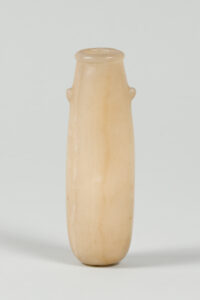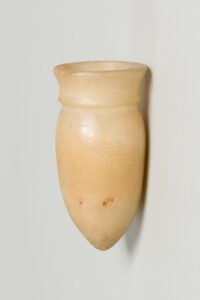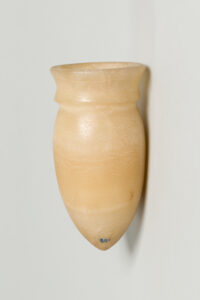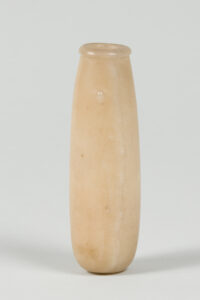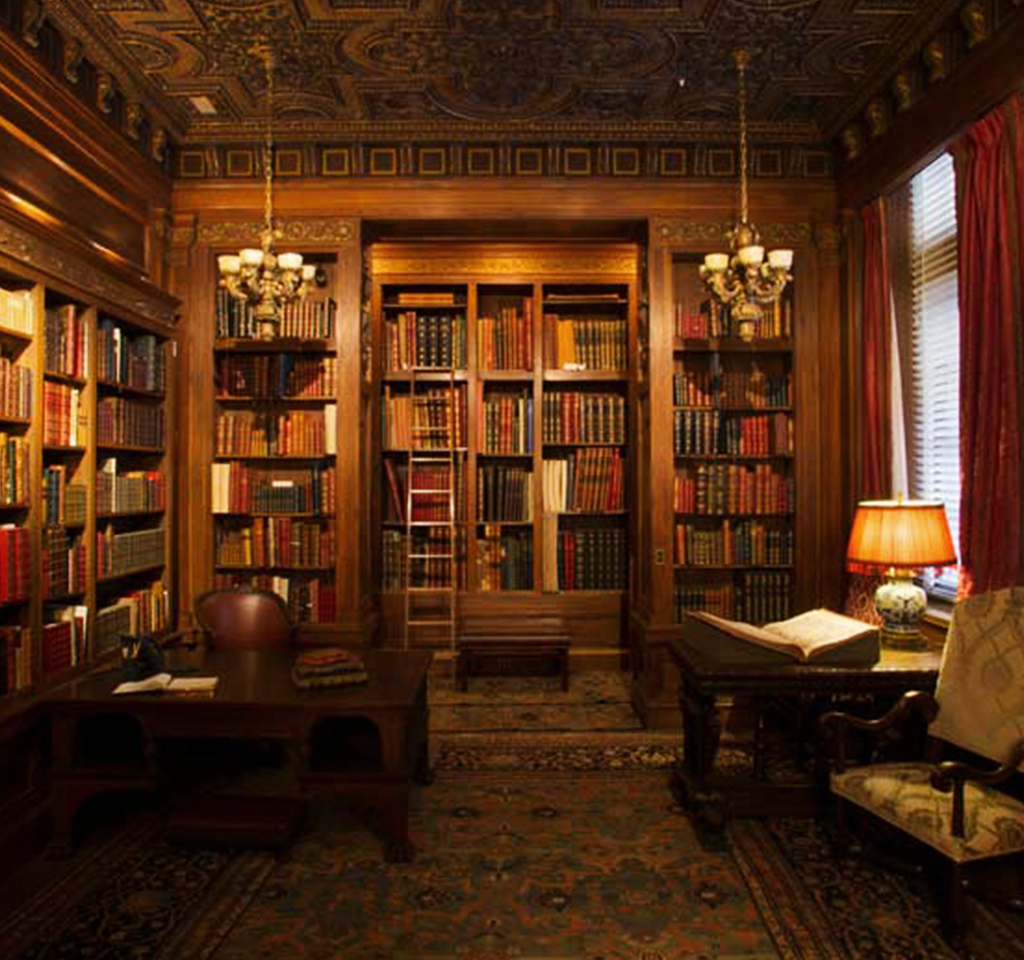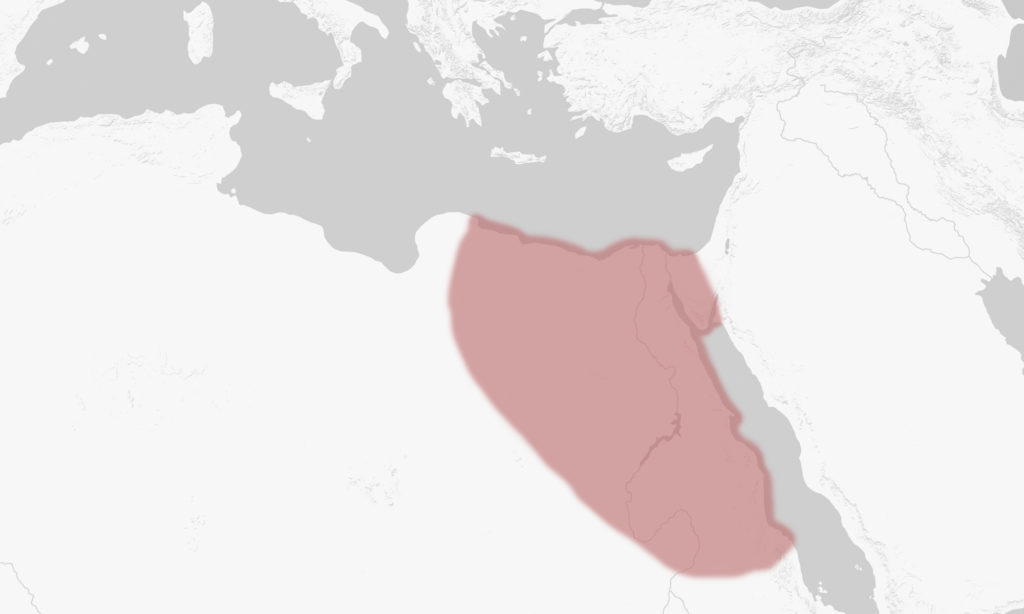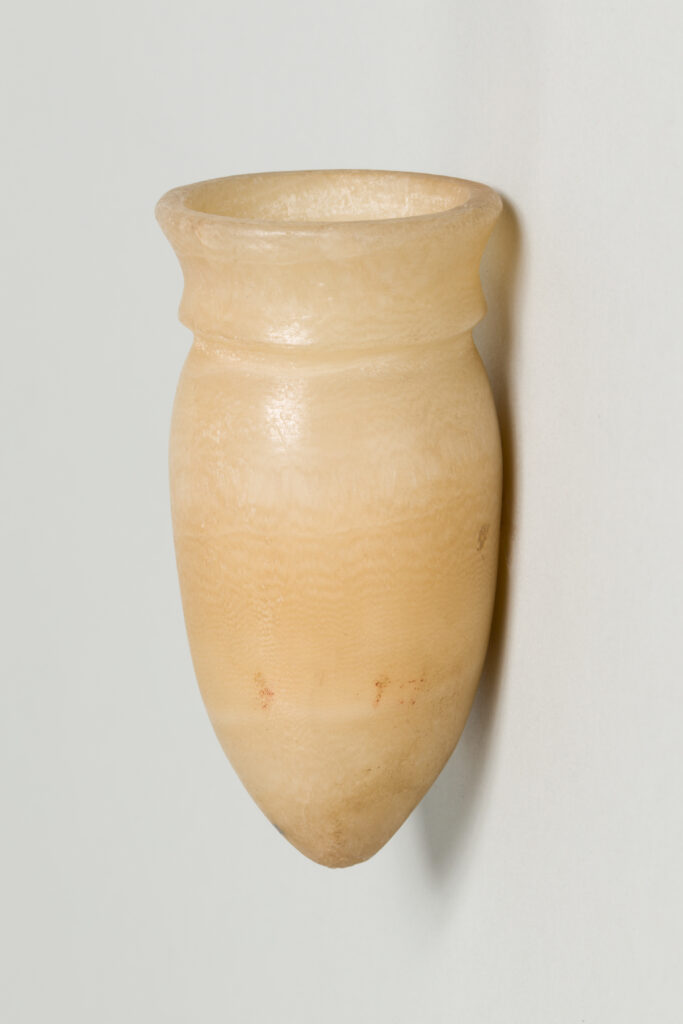
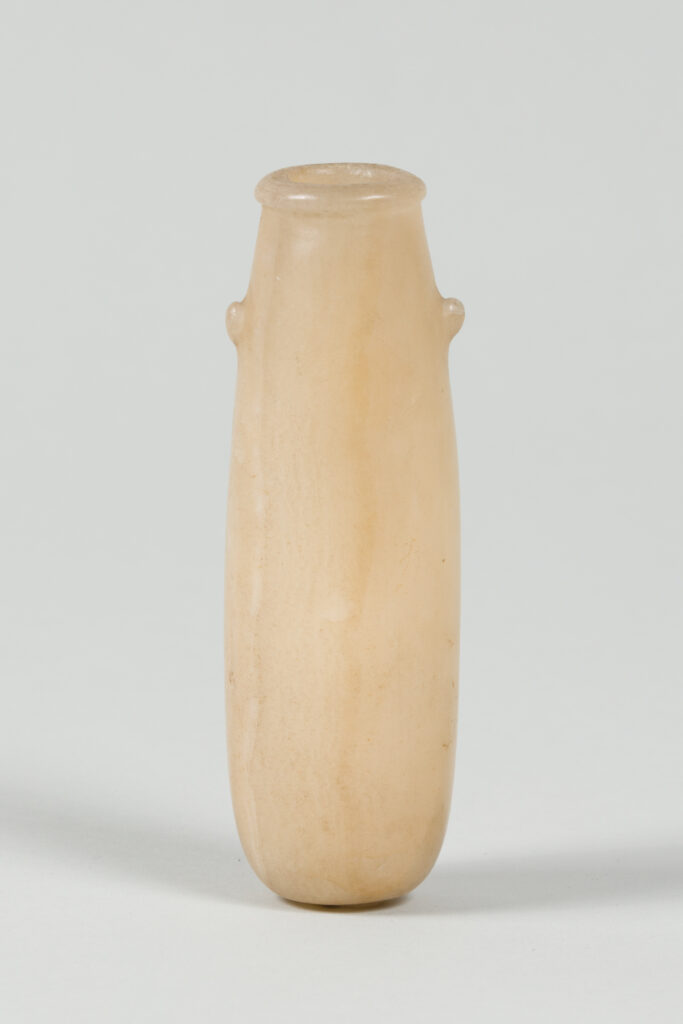

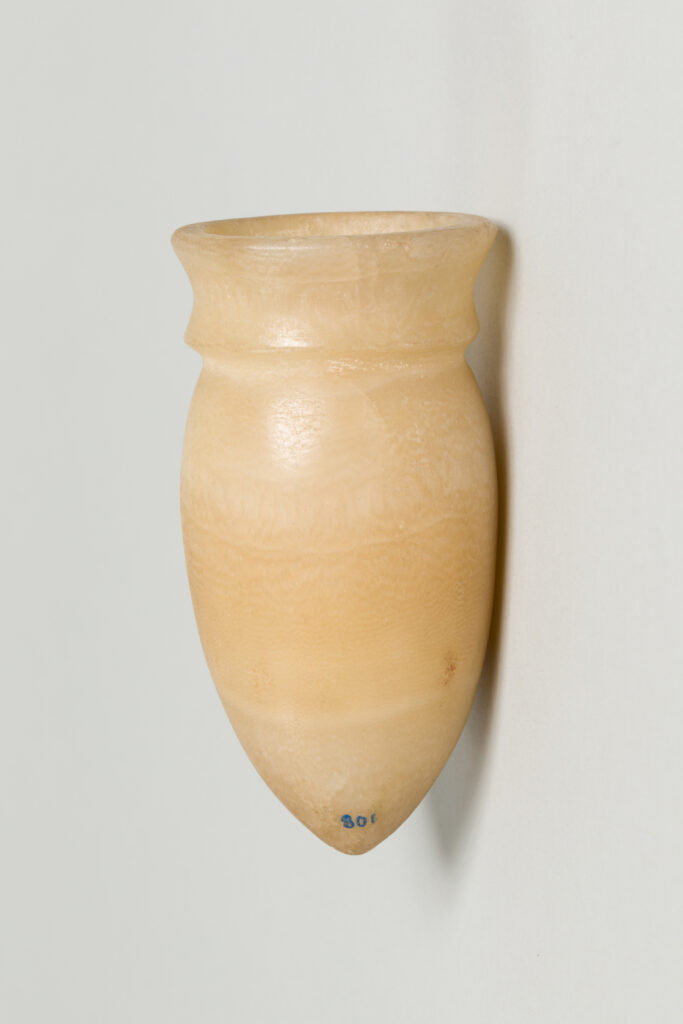

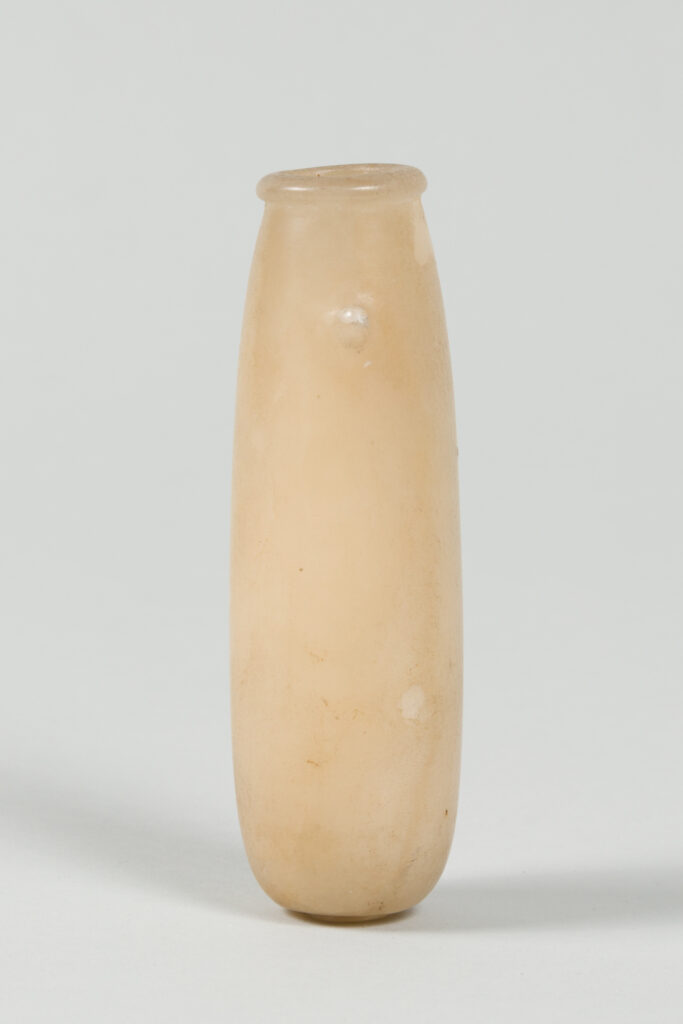
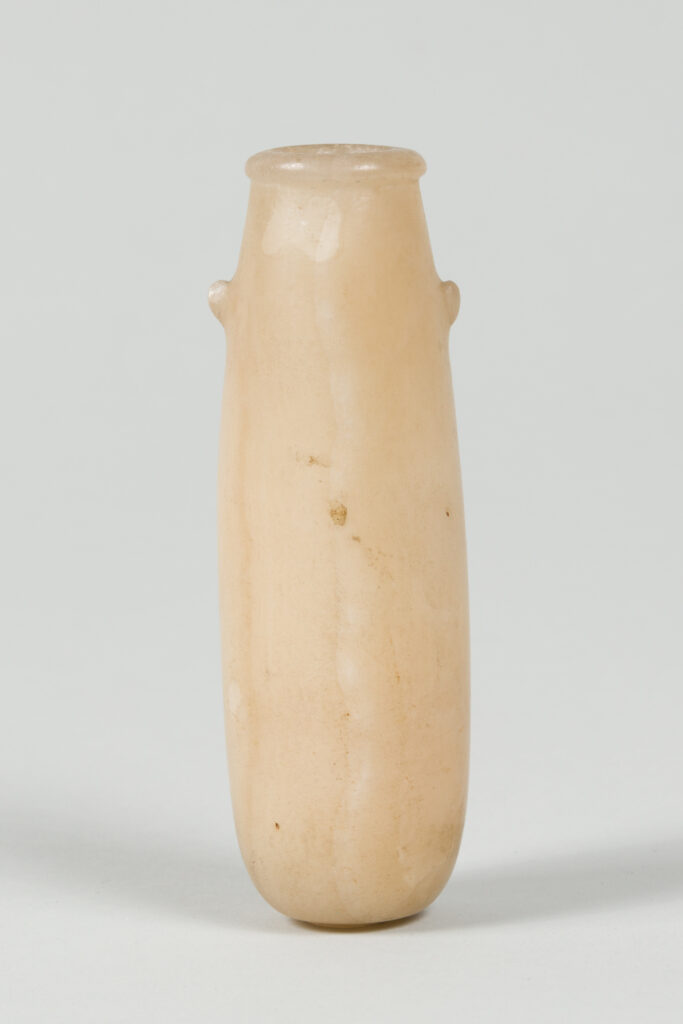
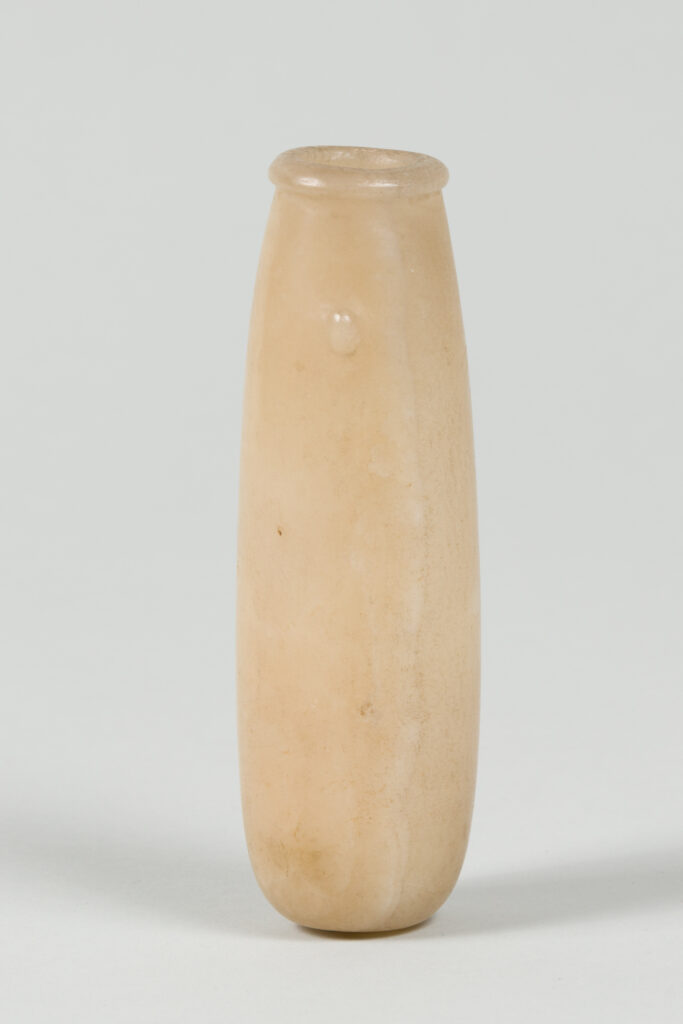
Gift of Miss Susan Dwight Bliss
1963.258, 1963.259The alabastron form originated in Egypt towards the end of the second millennium BCE and takes its name from the precious alabaster most commonly used to produce the vessels. The vessel originated as a container for perfumes and precious oils. Their narrow necks and long bodies would have helped control the dispensing of their precious contents. Most alabastrons feature lug handles for hanging, further securing the valuable contents. By the seventh century BCE, the form had spread across the Mediterranean world and was reproduced in a variety of materials including glass and clay, remaining popular throughout antiquity. These two alabastrons from the Bliss collection are good examples of the Egyptian alabaster style and its variety of shapes.
This vessel is one of a group of stone vessels donated to the Museum by Susan Dwight Bliss (1882–1966). Bliss was the sole heir of the magnificent Manhattan mansion belonging to her parents, wealthy financier George T. and Jeanette Dwight Bliss. During the Gilded Age, the couple, especially Jeanette, were avid American antiquarians, collecting Mediterranean antiquities and European art, amassing a sizeable library, and even installing a series of historic interiors in their uptown mansion.
Egyptian antiquity had captivated the public imagination on either side of the Atlantic since Napoleon’s campaigns in the region (1798–1801). Large contingents of scientists and scholars accompanied Napoleon’s campaigns, studying the cultures, languages, and histories of the region and excavating many ancient Egyptian sites; their discoveries, which included the Rosetta stone, were published in lavishly illustrated volumes. Excavations of Egyptian tombs increased throughout the nineteenth century in the wake of this campaign. Among the later excavations, perhaps most famous was the discovery of Tutankhamun’s tomb by the English archaeologist Howard Carter in 1922. Tomb contents regularly found their way into the hands of Western collectors and museums, either as part of legitimate partage agreements or through looting and the antiquities market.
Before 1963, Bliss family collection; 1963, gifted to the Bowdoin College Museum of Art by Susan Dwight Bliss
Collector
Sole heir to wealthy financier George T. (1816–1901) and Jeanette Dwight Bliss (1852–1924), Susan Dwight Bliss was a New York collector and philanthropist. She inherited a sizeable collection of ancient Mediterranean and historic European art from her parents, prominent collectors of the Gilded Age, and continued to collect rare books, manuscripts, and historic art and artifacts herself.

